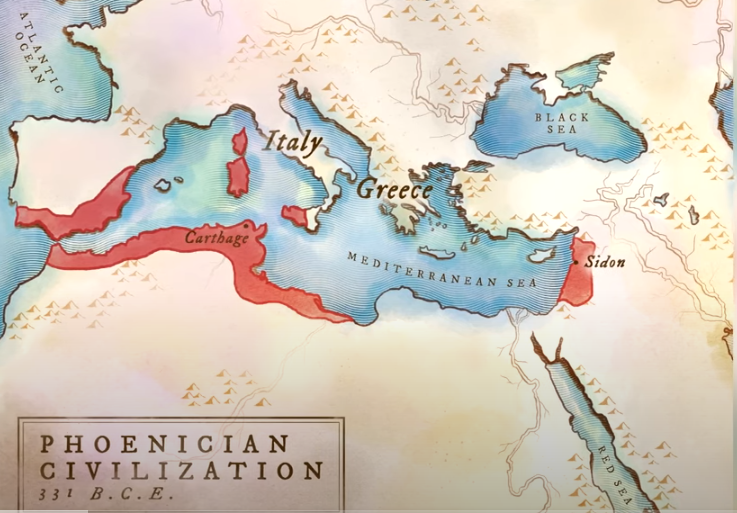
And a tenuous connection to the Delilah story early on too.
“Shortly after the disruption caused by the so-called Sea Peoples, the first Hebrew tribes arrived in Canaan … Around the same time, another group of people called the Philistines arrived next door in southern Canaan.
.. These Philistines may have been remnants of the Sea Peoples who had been beaten back by the Egyptians.
But the area of Canaan to the north … continued to be occupied by native Canaanites …
who came to be known as the Phoenicians.(Which same Phoenicians invent the alphabet, or take it to the next level, depending on your POV.)
Canaan is modern Lebanon and western Syria.
‘Phoenicians’ is a word made up by the Greeks. ‘Phoenicia’ was a culturally related group of city-states like Byblos and Tyre and Ugarit and Sidon. Even if we call them native Canaanites, that’s likely the way their enemies in Israel referred to them. (I heard once that ‘Navajo’ is the Apache word for Enemy, and ‘Apache’ is the Navajo word. For enemy. The fact that Phoenicia is a fictional construct of foreigners and a label for the convenience of historians means that it is ripe for the plucking in symbolic terms. With all due respect and apology to the unforgotten men of Byblos, and ladies of Sidon.)
The first treasure trove of Phoenician writing was found at Ugarit in 1928. Their alphabet had 30 letters, and began: A B C D H J K.
Like the Egyptians (and unlike Sumeria), the Phoenicians favored papyrus over stone tablets. The ease of transporting communiques, the downside of fragility.
Square miles of the cedarwood of the Levant, now reduced to a small wild groves, were leveraged into a shipbuilding industry. The Levant has multiple natural harbors as well.
They became traders.
The alphabet inevitably got traded all over the Mediterranean as a secondary product.
This diaspora of written language happened a mere 3000 years before present.
(From our perspective the next step is Greek Mythology.)
Most of the above several paragraphs is adapted from The Phoenician Alphabet.
In symbology terms, there are two tangentially related things about Phoenicians that intrigue me.
First there’s the fact that a large part of their trading wealth came from exporting Tyrian purple, made from the deep offshore murex snails.
Second is their religion, which features the worship of Ashtoreth (Ashtart, Ishtar, Astarte). Plus there’s compelling evidence that her rival God Jehovah of the Christians, Jews, and Muslims began life as the Phoenician god Adon, as in Adonis and more to the point, Adonai, which is how you pronounced yhwh back in the day.